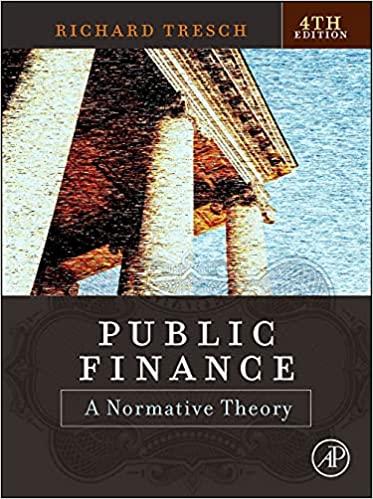Question
Underinvestment due to Debt-Overhang: (This problem illustrates the debt overhang problem, first modeled by Myers (1977), which relates to the inability of a firm with
Underinvestment due to Debt-Overhang: (This problem illustrates the debt overhang problem, first modeled by Myers (1977), which relates to the inability of a firm with profitable investment opportunities to finance them because it has excessive amount of debts relative to its assets.) Assume the following scenario: At time 0, a firm has positive NPV project, whose cash flow will be realized at time 2. For the project to be implemented, firm management has to invest an amount I=$80 million in the (non-divisible) project at an intermediate date t=1, after observing an underlying economic variable (the state) which will be realized between time 0 and 1, and which affects the profitability of the project. The probability distribution of the various states at time 0 and the gross project cash flows in each state are as follows: State: S1 S2 S3 S4 Prob: 0.25 0.25 0.25 0.25 Cash Flow: 150 120 100 20. If firm management (who acts in the interest of equity holders) chooses to go ahead and invests in the project, they will raise the amount I, net of any debt issued at time 0, by selling new equity; if they do not invest in the project, the project is not implemented, and zero cash flows are realized. The state is observable by both managers/insiders who make the investment decisions as well as outsiders, but not contractible (no enforceable contracts can be written on the state). Assume that the firm has no assets in place, and the new project is the only source of value to the firm (if any). All agents are risk-neutral, and the risk free rate of return is zero. A) To begin with, assume that there is no debt issued at time 0. Give the investment policy chosen by management as a function of the state. What will the firms equity value be at time 0 in this case? B) Assume now that the firm has issued pure discount debt of face value $30 million at time 0, maturing at time2. Assume for the purposes of section (b) that debt contracts are NOT renegotiable. I) How will the firms investment policy change in this case? II) Given the above investment policy, what will be the market value of debt at time 0? What will be the value of the entire firm at time 0? What will be the value of equity at time 0? III) What is the expected-value of the value loss due to debt (agency cost of debt), as computed at time 0?
Step by Step Solution
There are 3 Steps involved in it
Step: 1

Get Instant Access to Expert-Tailored Solutions
See step-by-step solutions with expert insights and AI powered tools for academic success
Step: 2

Step: 3

Ace Your Homework with AI
Get the answers you need in no time with our AI-driven, step-by-step assistance
Get Started


